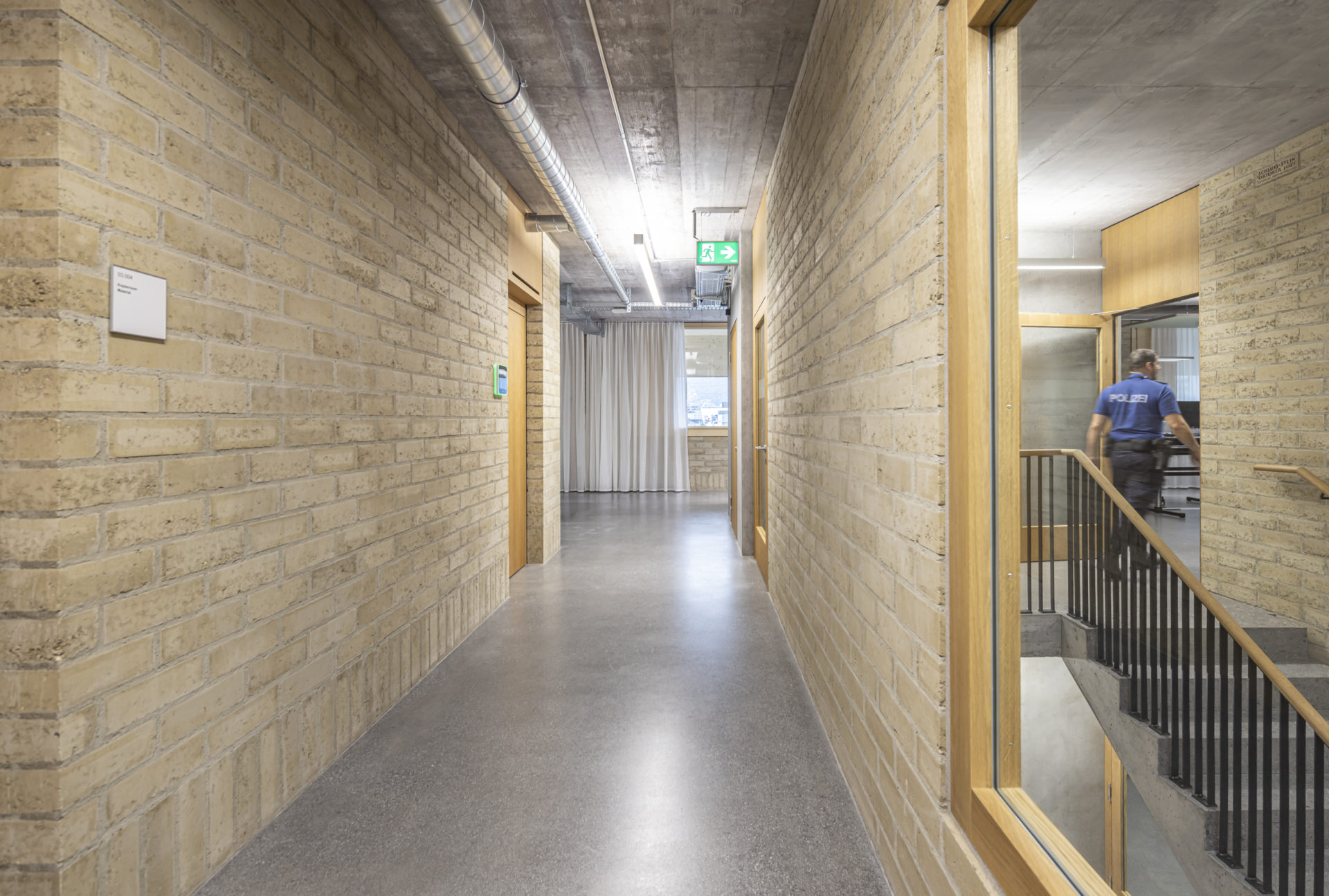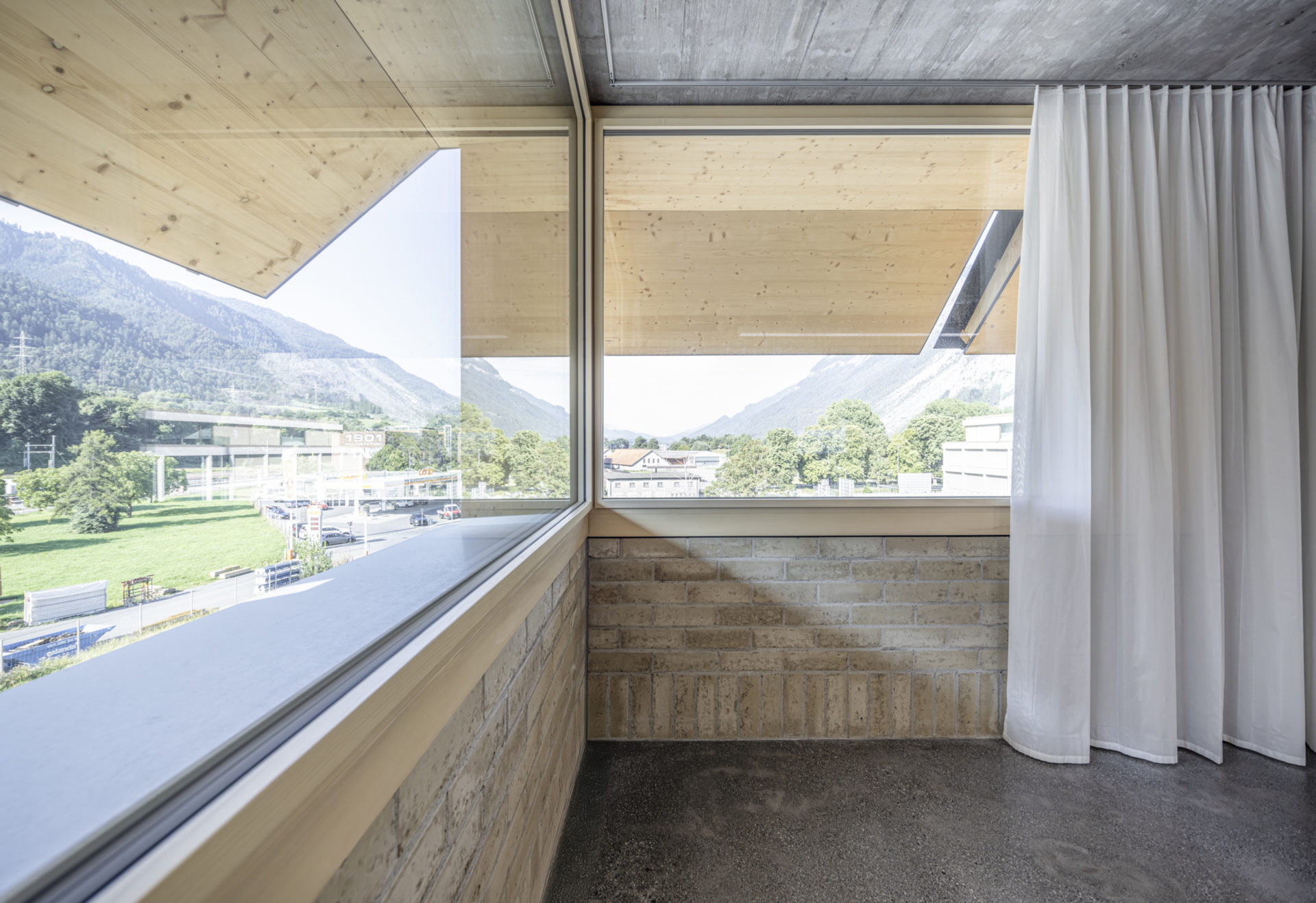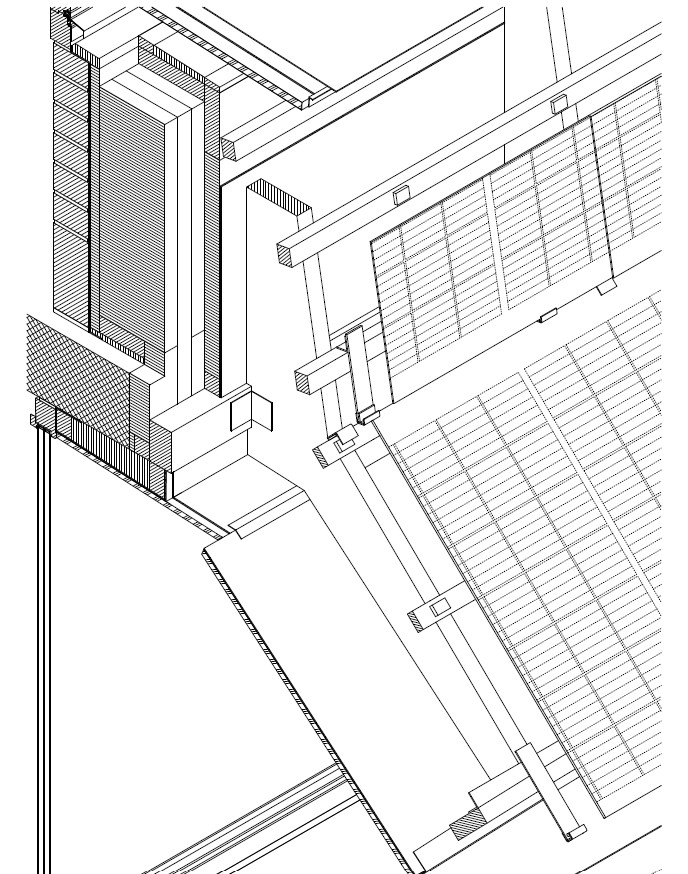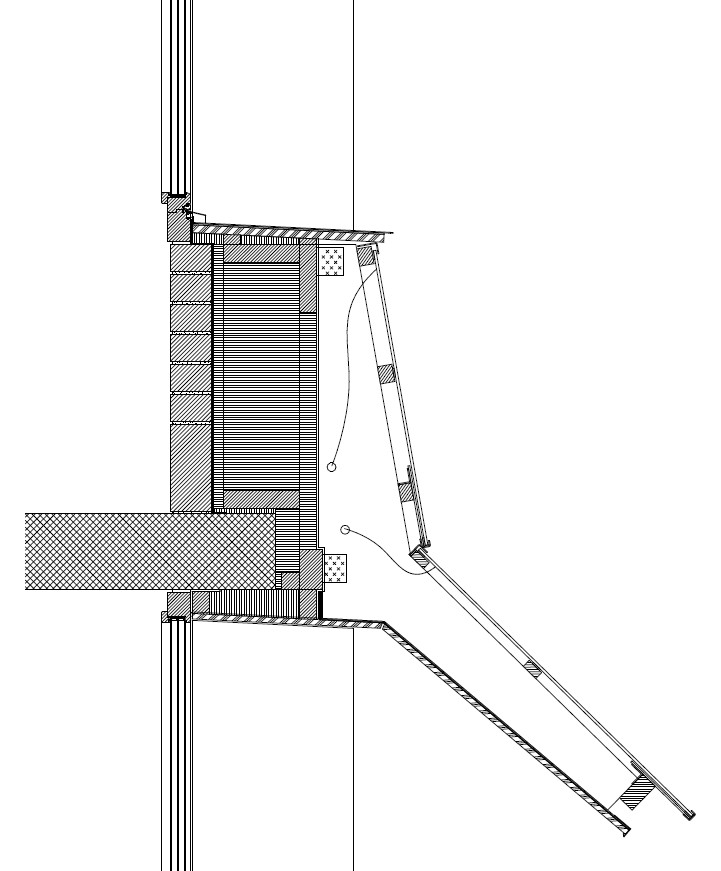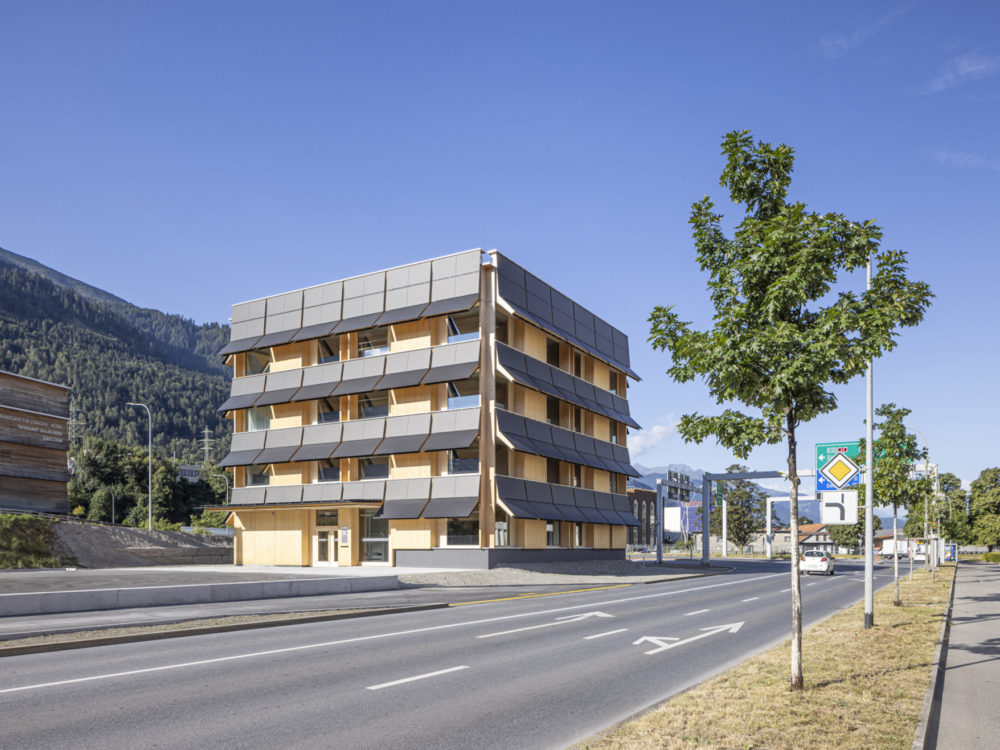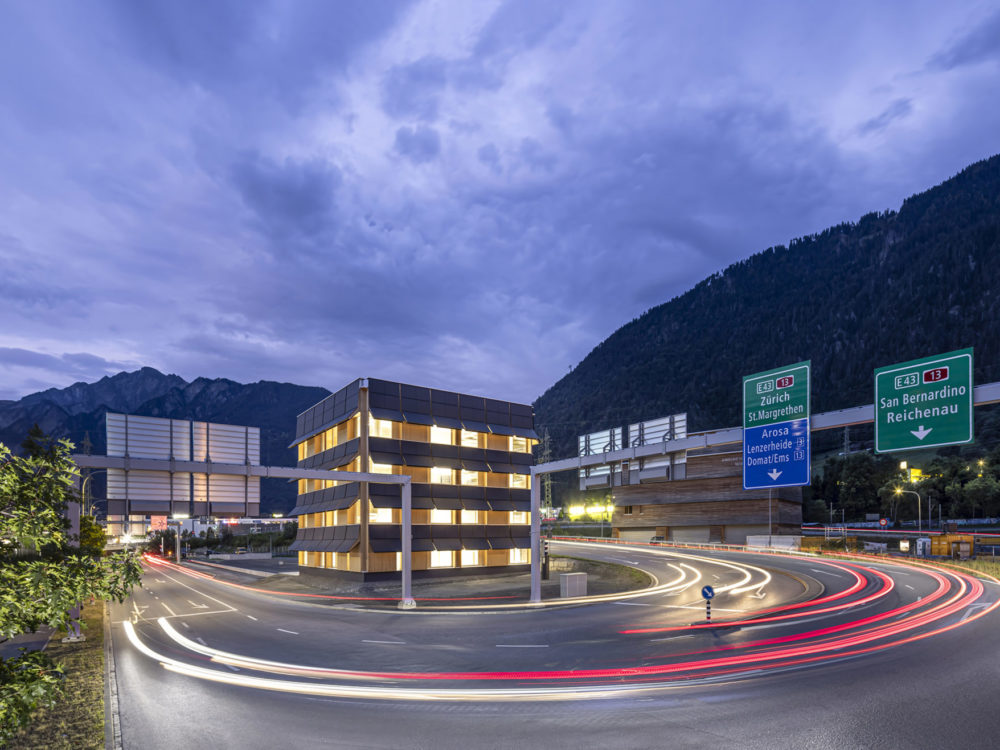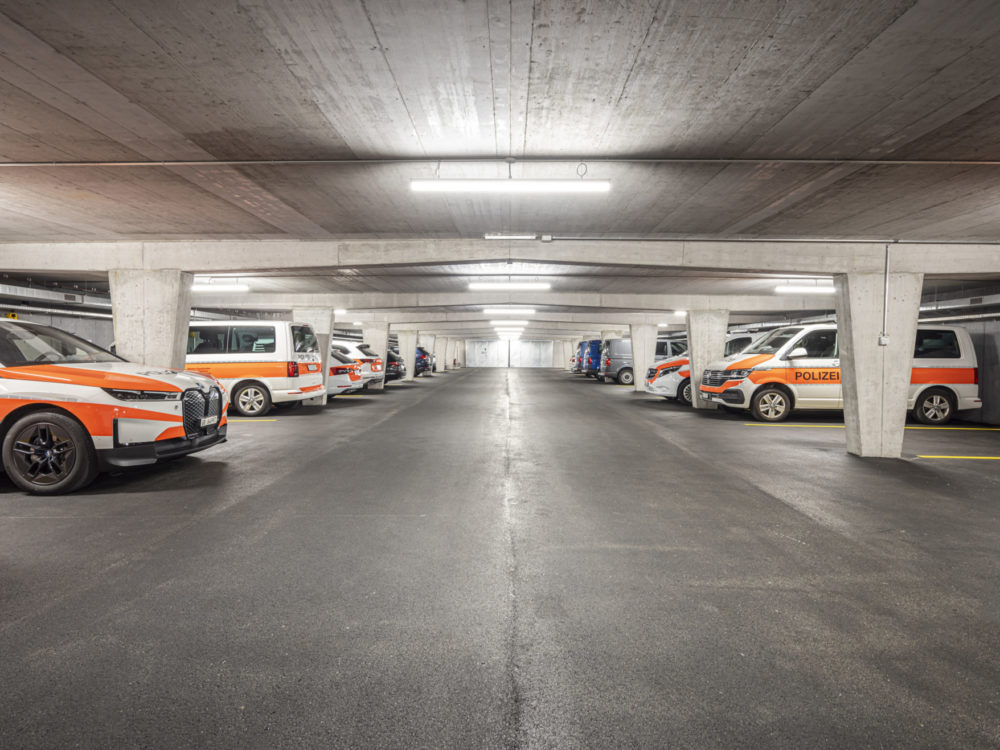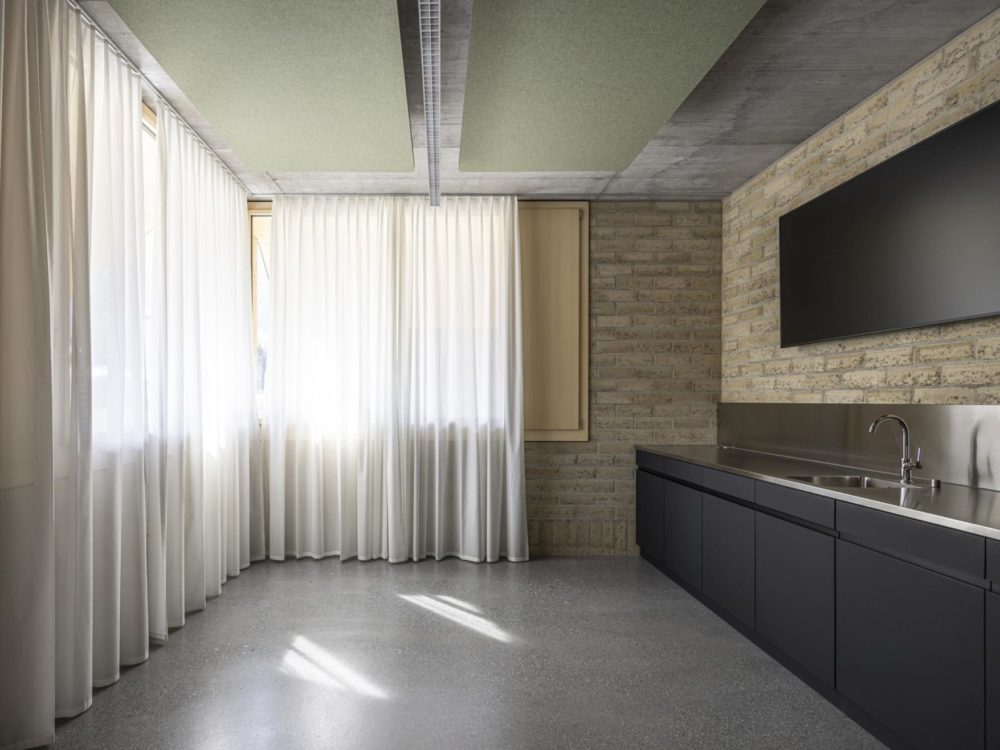Le nouveau quartier général de la police routière à Coire, conçu par Comamala Ismail Architects, est le premier bâtiment à énergie zéro de Suisse, qui fait preuve d’une architecture solaire avancée. L’une des principales caractéristiques de la conception est l’intégration d’une installation photovoltaïque (BIPV) dans les façades, où les parapets des fenêtres recouverts de modules photovoltaïques remplissent plusieurs fonctions: production d’électricité, ombrage et réduction du bruit provenant de l’autoroute adjacente. De plus, les modules photovoltaïques installés sur le toit plat contribuent de manière significative à la production d’énergie. La combinaison de ces systèmes permet de produire environ quatre fois les besoins énergétiques du bâtiment, l’électricité excédentaire étant injectée dans le réseau municipal de Coire. Afin d’optimiser les performances solaires, le bâtiment est équipé d’éléments d’ombrage fixes qui éliminent le besoin de stores motorisés tout en empêchant la surchauffe. Des fenêtres à triple vitrage haute performance renforcent encore l’isolation, réduisant ainsi la demande énergétique globale. Le projet allie harmonieusement la production d’énergie renouvelable et la conception architecturale, établissant ainsi une nouvelle référence en matière d’infrastructure urbaine durable.
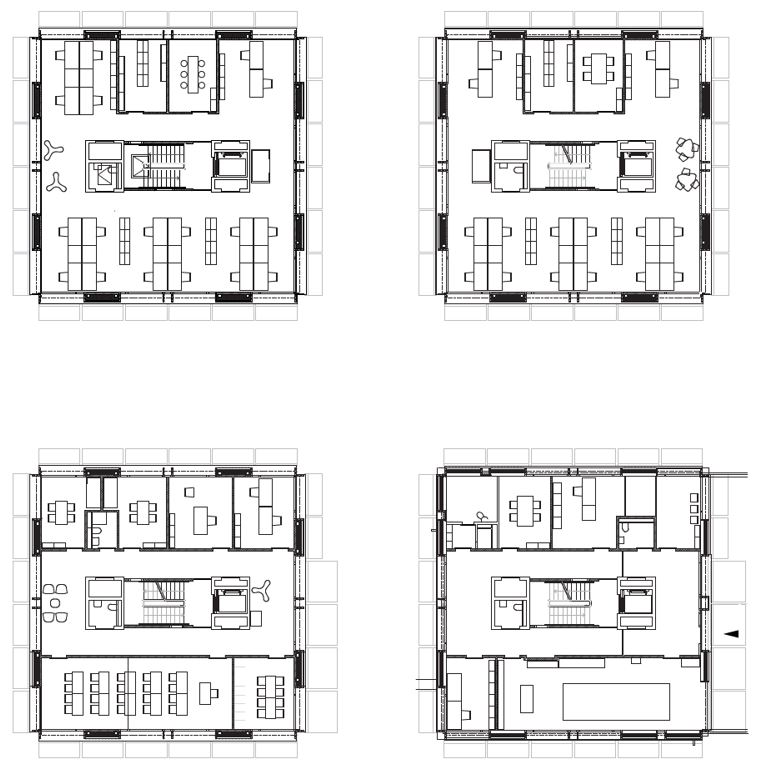
1 étage (en bas à gauche), rez-de-chaussée (en bas à droite), 3 étages (en haut à gauche), 2 étages (en haut à droite). La disposition des pièces aux étages supérieurs est modulaire. Le plan d’étage peut être subdivisé de manière flexible, ce qui est la première exigence pour un bâtiment durable et donc performant sur le long terme. Le bâtiment peut ainsi s’adapter aux besoins changeants dans le temps de la manière la plus simple et sans investissements majeurs.
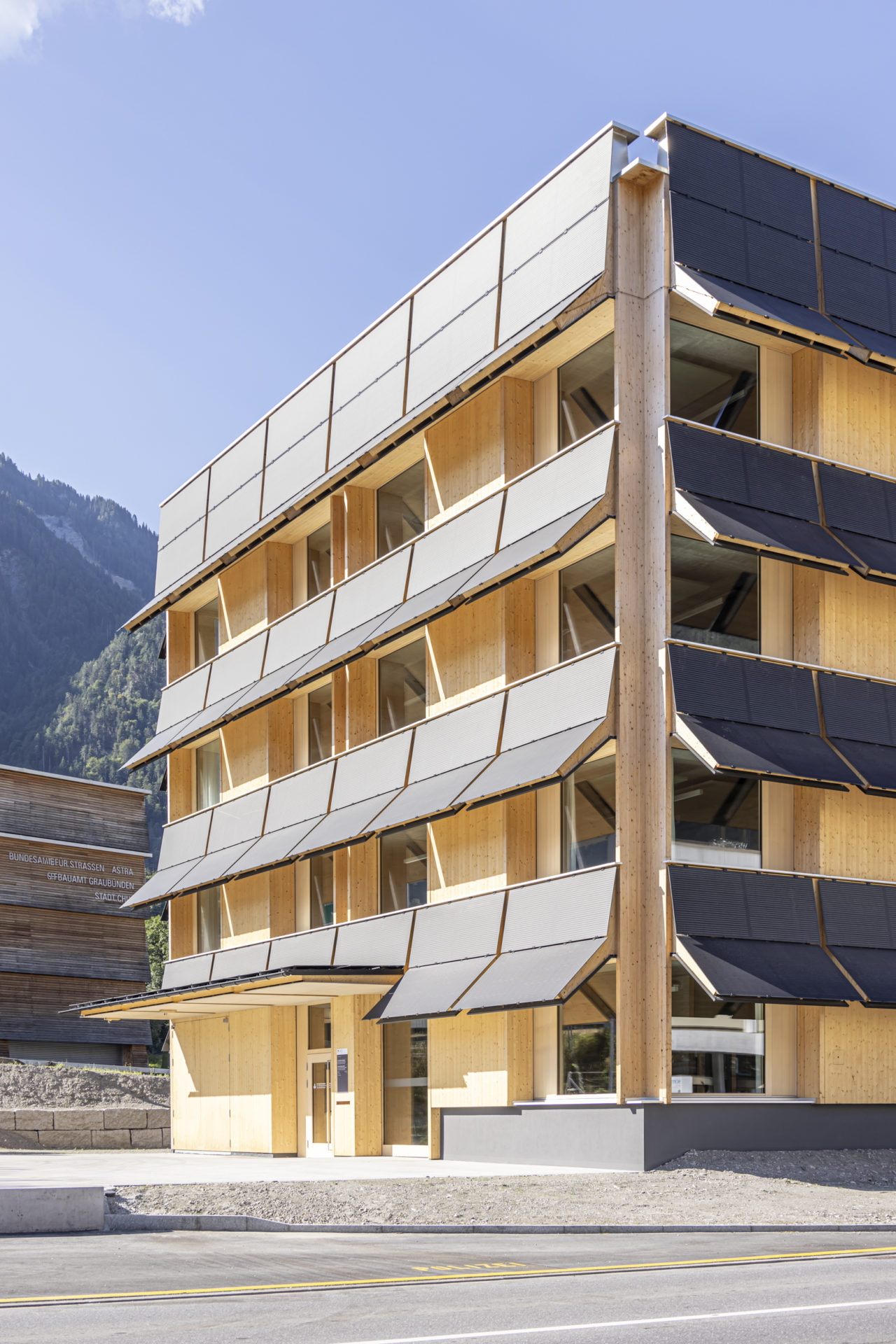
Les façades sont équipées de 220 modules photovoltaïques intégrés. Ceux-ci sont disponibles en trois formats, le plus grand mesurant 130 x 2770 mm.
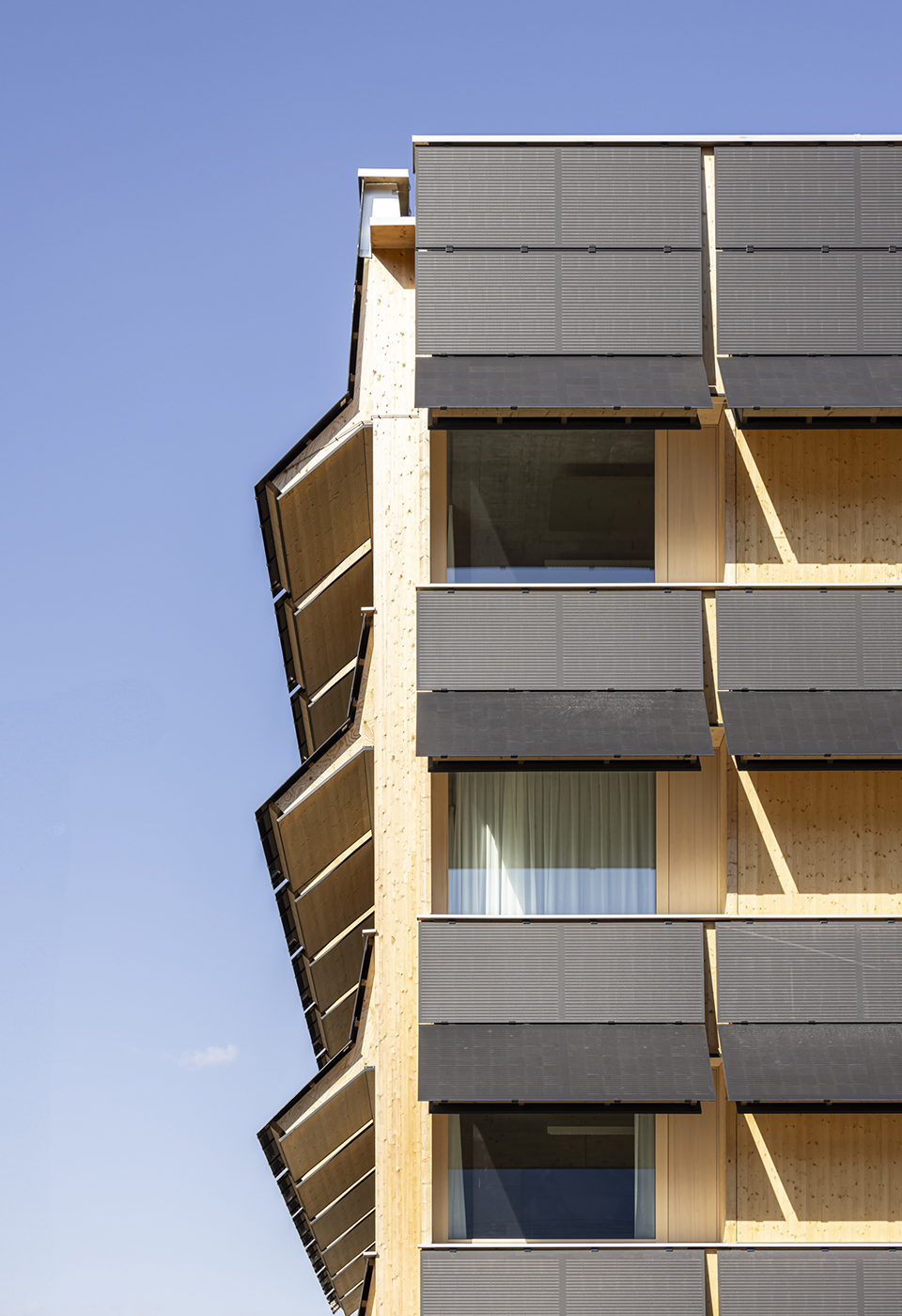
Les éléments d’ombrage fixes extérieurs servent non seulement de protection solaire, mais définissent également les façades.
| Surface solaire active | 915m² (toiture et façades) | |
| Rapport surface solaire active | en. 25% | en. 75% |
| Puissance nominale | 48 kWp | 114 kWp |
| Application de l’enveloppe du bâtiment | Toit plat | Accessoires |

Les façades se caractérisent par un bardage en bois qui s’étend le long des axes verticaux et horizontaux.
Le design du bâtiment a suivi les principes de la sobriété, c’est-à-dire que les matériaux et les couches non nécessaires, tels que la peinture et le plâtre, ont été supprimés. L’infrastructure technique suit une approche « low-tech » et le parking a été construit sans dalle en béton afin de réduire les matériaux utilisés. Tous les éléments porteurs sont en béton. Par rapport à la construction en bois, le béton offre des avantages décisifs en matière de protection contre la chaleur estivale. Les murs non porteurs en blocs d’argile ont une très faible énergie grise et contribuent à un bon confort climatique (température, humidité). Les surfaces en béton nu ne nécessitent aucun traitement supplémentaire. La disposition modulaire des pièces aux étages supérieurs offre une grande flexibilité pour des adaptations futures et prolonge la durée de vie du bâtiment. La fonctionnalité a été optimisée afin de minimiser le gaspillage de matériaux. Les parapets des fenêtres sont recouverts de modules photovoltaïques qui ont plusieurs fonctions : production d’électricité, revêtement de façade, ombrage et réduction du bruit provenant de l’autoroute voisine.

Le fait de ne pas avoir à réaliser de finitions supplémentaires pour les sols ou les murs réduit la consommation de matériaux et simplifie la construction.
CRÉDITS
Photo Ingo Rasp Photography
